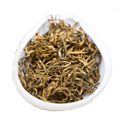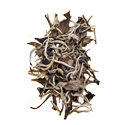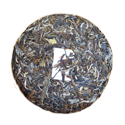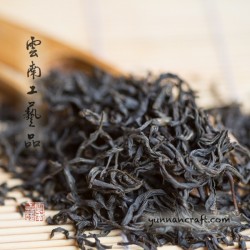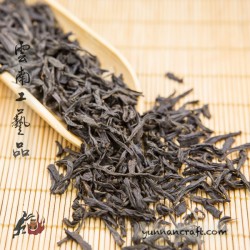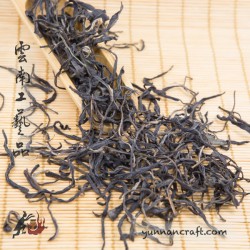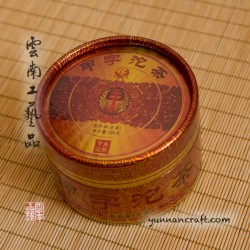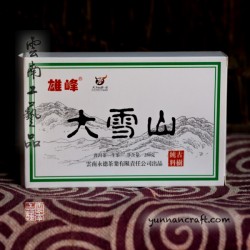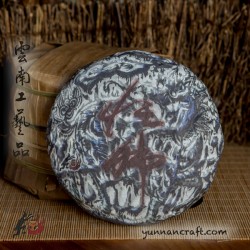No products
Tea Education
Filter
-

Wood Fired Zitao Teapot - Gong Chun 105ml
Jianshui tea pot fired in kiln...
USD 304.00 -5% USD 320.00
New products
-

2024 Lao Cong MI Lan Xiang Dancong
Medium oxidised and roasted tea leaves from the first spring harvest of...
USD 19.04 -

2024 Dan Cong Cha Hu
Late winter and early spring harvest medium-dark roast Dancong tea which...
USD 11.20 -

Wood Fired Zitao Teapot - Qie Duan Nan Gua 60ml
Mini size "single player" Jianshui tea pot in shape of pumpkin, fired in...
USD 192.00 -

Wood Fired Zitao Teapot - Qie Duan 150ml
Jianshui tea pot fired in kiln traditionally on wood. The outer surface...
USD 176.00 -

-

2024 Ailao Shan Ye Sheng Gushu Hong
Spring harvest from big wild varietal tea trees. No Huang Pian selected...
USD 15.68 -

Zitao Teapot - Ban Yue - 100ml
Handmade , double fired at around 1200C in gas kiln, Ban Yue Hu Jianshui...
USD 116.80 -

Zitao Teapot - Xi Bian - 110ml
Handmade , double fired at around 1200C in gas kiln, Xi Bian Hu Jianshui...
USD 115.20
Practice makes better! There are many smart articles
on internet and books about the tea available to buy.
But the main part of tea education , we believe ,
is not the theory but actual drinking the tea and
comparing differences between many aspects.
We include in this category products ,
which we believe are beneficial to tea drinker in a matte...
Practice makes better! There are many smart articles
on internet and books about the tea available to buy.
But the main part of tea education , we believe ,
is not the theory but actual drinking the tea and
comparing differences between many aspects.
We include in this category products ,
which we believe are beneficial to tea drinker in a matter
of practical experience.
You can also check some comparing tea reviews in our blog.
Tea Education There are 67 products.
Subcategories
Hong Cha
红茶 - Red tea
For more information about the naming tea ,please refer to Chinese Tea Vocabulary at the footer of the website.
Grade
Song Zhen - 1 tip and 1 or 2 or 3 leaves , Jin Zhen , Jin Si , Jin Ya, Jin Luo - only tips , Gu Shu - older / bigger leaves and Huang Pian ( yellow leaves ) and some tips
Processing
Fujian style with temperature final roast in short time called " Ti Xiang or Gao Xiang ", like Zhong Guo Hong , Zheng Shan Xiao Zhong which promotes nutty and chocolate sweet notes.
Yunnan traditional style with light withering and sun dried called " Shai Hong " , promoting fruity notes and suitable for ageing even in less humid environment.
Typical Dian Hong style like Classic 58 tea which is made with light withering and post processed on low temperature roast in order to preserve fruity notes and provide rich tea same time.
Shape
Apart of the loose form also in various shapes are available, like cakes , bricks , tuo , balls called " Long Zhu ". The reason is not only convenience of storing but also ageing purposes and mostly done with aging ability black teas like Sun Dried " Shai Hong " .
Trees
Generally made of "tai di cha" - tea bushes from plantations like in Feng Qing area or Simao ( Puer ) . In Yunnan , the red tea is also made from older arbor tea trees called Gu Shu Hong Cha.
Varietal
Many varietals like Jin Pu Hao in Ailao Shan and Jing Gu area , Yun Keng Shi Hao from Feng Qing but also Zi Jiuan or Zi Ya- the purple varietal is used along with Ye Sheng Hong Cha from Camelia Taliensis wild tea trees.
Origin
We generally focus on Yunnan tea , but Fujian also offers large variety of black tea but only from small young bushes. In Yunnan the most famous areas are Feng Qing and Simao ( Puer ).
Harvest
In Yunnan generally red tea is made of spring , summer or autumn harvest. It is falsely believed that the spring harvest is always the best. Some red ( blacks ) are the better in autumn edition than spring. Also some black teas might take year or two to develop a better taste, so the fresh ones also not always better.
Brewing
Brewing parameters ( volume , amount of tea , time of brewing ) depends on personal taste preference and desired strength of the tea. Temperature is recommended 90 - 100C where lower temperature for more tipsy blacks or light withered sun dried ones and higher for dark oxidized and heavy roasted black teas like Keemun , Zhen Shan Xiao Zhong etc.
In brewing the white tea, the size of the leaf ( grade ) , age of trees ( bush or Gushu ) or shape ( loose / pressed and soft or hard pressed ) factors also need to be concerned.
The products listed below is a representative selection of the elements written above , helping you to understand the differences by trying particular examples.
Bai Cha
白茶 - White tea
For more information about the naming tea ,please refer to Chinese Tea Vocabulary at the footer of the website.
Grade
Yu Guang Bai - 1 tip and 2 or 3 leaves , Bai Hao - only tips , Lao Ye - older / bigger leaves and Huang Pian ( yellow leaves )
Processing
Fujian style with long time withering Bai Mu Dan which offers sweet and fruity taste or Yunnan traditional style with light withering promoting flowery notes and suitable for ageing even in less humid environment.
Shape
Apart of the loose form also in various shapes are available, like cakes , bricks , tuo , balls called " Long Zhu ". The reason is not only convenience of storing but also ageing purposes.
Trees
Generally made of "tai di cha" - tea bushes from plantations like Jing Gu , Ai Lao Shan. In Yunnan the white tea is also made from older arbor tea trees called Gu Shu Bai Cha.
Varietal
The mostly common varietal Jin Pu Hao in Ailao Shan and Jing Gu area , but also Zi Jiuan - the purple varietal is used along with Ye Sheng Bai Cha or Ya Bao from wild tea trees.
Origin
We generally focus on Yunnan tea , but Fujian is probably the most famous for white tea production.
Harvest
In Yunnan generally white tea is made of spring , summer or autumn harvest. The spring harvest is usually stronger , but autumn one much smoother and sometimes sweeter. The white tea has an ability to age if well stored in loose or pressed. Transforming flowery notes to fruity ones.
Brewing
Brewing parameters ( volume , amount of tea , time of brewing ) depends on personal taste preference and desired strength of the tea. Temperature is recommended 90 - 100C where lower temperature for younger and higher for older whites or made from " Lao Ye " , " Huang Pian " or longer withered white teas.
In brewing the white tea, the size of the leaf ( grade ) , age of trees ( bush or Gushu ) , age of tea ( time of storage ) , previous storage conditions ( humidity ) or shape ( loose / pressed and soft or hard pressed ) factors also need to be concerned.
The products listed below is a representative selection of the elements written above , helping you to understand the differences by trying particular examples.
Sheng Pu Er
生普洱 - Sheng Pu Er
For more information about the naming tea ,please refer to Chinese Tea Vocabulary at the footer of the website.
Grade
Standard is 1 tip and 3 or 4 leaves , some leaves might be Lao Ye - older / bigger leaves and Huang Pian ( yellow leaves ) which may or may not be selected out and sold separately.
Processing
Kill green is done in wok on fire or in el.drying / roasting drum. Temperatures and times can slightly vary based on tea leaf condition and concept of final product. Frying on high temperature shorter time " Gao Wen Sha Qing " - high temp. kill green - used for the new concept of sheng puerh tea , promoting the sweetness and aroma , yet suppressing the ageing ability.
Long withering time " Xin Gong Yi " - the new craft - which promotes the sweetness and suppresses the astringency, but also degrading the ageing ability.
Both of these concepts are very good for consumption of fresh mao cha or quick sale of the pressed cakes ( promoting Puer Hype ) , but we can't confirm that it's good for long term storage.
Some areas are significant for the production of sheng puer with very intensive smoky notes. Sheng puerh also can be blended with flowers ( like jasmine or nuo mi ) or just be steamed with.
For search of sheng based on tasting notes, please refer to Tea Taste at the footer of our website.
Shape
Apart of the loose form also in various shapes are available, like cakes , bricks , tuo , balls called " Long Zhu " . Sheng puerh dense extract " Cha Gao "
Trees
Sheng puerh can be made of "tai di cha" - tea bushes from plantations , from " Qiao Mu " arbor tea trees growing in tea gardens or in forest . The most expensive is production from old tea trees called " Gu Shu " ( we call it also Old Arbor ).
Varietal
Camellia Sinensis var. Assamica , var.pubillinba, and many others.Aside of cultivated tea plants there is also production from wild tea trees like Camellia Taliensis ..etc.
We do not state varietal on the product unless we can trace it. Many vendors use it as marketing tool or just guessing without having solid evidence of the varietal.
Origin
The location is very important for single origin products as some places , mountains or even villages might be significant for specific taste or other qualities. In pu erh tea production is also common ( in fact back in past it was the main concept ) blending / mixing mao cha from different locations or different trees ( bushes with arbors ) .
Harvest
The most valuable on market is usually the spring harvest but not always the 1st. harvest is the best. The higher price sometimes comes from the low volume available. Sometimes also comes as a mixture of young and old tea trees , because both provide very little if picked too early.
Summer harvest is usually used for low end products ( depends on the area and trees ) or for further processing like making shu puerh.
Autumn harvest being mistakenly overlooked. Some sheng can be very interesting. In many cases of autumn mao cha the Huang Pian ( yellow leaves ) are not selected out , which gives to tea overall interesting sweet taste.
Brewing
Brewing parameters ( volume , amount of tea , time of brewing ) depends on personal taste preference and desired strength of the tea. Temperature is recommended 90 - 100C where lower temperature for younger and higher for older shengs.
In brewing the sheng the size of the leaf ( grade ) , age of trees ( bush or Gushu ) , age of tea ( time of storage ) , previous storage conditions ( humidity ) or shape ( loose / pressed and soft or hard pressed ) factors also need to be concerned.
The products listed below is a representative selection of the elements written above , helping you to understand the differences by trying particular examples.
Shu Pu Er
熟普洱 - Shu Pu Er
For more information about the Shu Puerh tea ,please refer to Shu Puer Masterclass on our blog page.
Grade
"Jin Ya" - Golden tips ( medium or bigger tips ) , "Gong Ting " - small tips , 1st. grade - tip and small leaf. Other grades down to the 7th grade are about the ration of tips - leaves - stems - old leaves - Huang Pian ( yellow leaves ) , which most of it is obvious by visual.
Huang Pian also could be sold loose or pressed as separate product.
Processing
The depth of fermentation has impact on final taste and further ability to change with time ( mistakenly associated with ageing ). Dark, medium and light fermentation terms are not set exactly so the association with final product might vary from the producer or vendor. ( for example : what we call medium fermentation , for somebody else this could be light fermentation and vice versa )
There are few concepts of fermentation. Apart big tea factory production making many tons batch in one go , there is also small private production , above the ground fermentation ( tea is in bags sitting on pallets avoiding contact with ground ) or basket fermentation ( fermenting in bamboo baskets. These are very small batches ).
Processing is also related to area as the climate conditions vary ( particularly heat and humidity ) which are important factors for the fermentation. Some areas are also significant for shu production with intensive smokey notes.
Shu puerh also can be blended with flowers ( like jasmine or nuo mi ) or just be steamed with.
For search of shu based on tasting notes, please refer to Tea Taste at the footer of our website.
Shape
Apart of the loose form also in various shapes either natural way like " Lao Cha Tou " or manmade like cakes , bricks , tuo , balls called " Long Zhu " . Some other alternative forms are available like shu puerh stuffed into the mandarine, shu puerh granules called Silver Nuggets or shu puerh dense extract " Cha Gao "
Trees
Shu puerh is mostly made of "tai di cha" - tea bushes from plantations or from " Qiao Mu " arbor tea trees growing in tea gardens . The most expensive is production from old tea trees called " Gu Shu " ( we call it also Old Arbor ).
Varietal
Camellia Sinensis var. Assamica , var.pubillinba, and many others.Aside of cultivated tea plants there is also production from wild tea trees like Camellia Taliensis ..etc.
We do not state varietal on the product unless we can trace it. Many vendors use it as marketing tool or just guessing without having solid evidence of the varietal.
Origin
The location is very important for single origin products as some places , mountains or even villages might be significant for specific taste or other qualities. In pu erh tea production is also common ( in fact back in past it was the main concept ) blending / mixing mao cha from different locations or different trees ( bushes with arbors ) .
Harvest
Shu puerh is mostly made as the cheaper product than sheng. Late spring , summer or autumn harvests ( or mix of them ) is generally used for production. In taste and quality of brewing the right / suitable fermentation ( and appropriate kill green for sheng before gone to processing of shu ) plays big role and might cause that product made of summer material might be actually better than spring one.
Brewing
Brewing parameters ( volume , amount of tea , time of brewing ) depends on personal taste preference and desired strength of the tea. Temperature is recommended 100C boiling water , in order to get the most out of the shu.
In brewing the shu the size of the leaf ( grade ) , depth of fermentation , previous storage ( humidity ) or shape ( loose / pressed and soft or hard pressed ) factors also need to be concerned.
The products listed below is a representative selection of the elements written above , helping you to understand the differences by trying particular examples.
Dancong Hong Cha
2 Review(s)Very interesting black tea from our Dan Cong farmer. Honey scent with woody notes . The crispy clear golden tea liquor has very sweet and fruity body leaving pleasant sensation in your mouth right after the first cup.
USD 6.88Out of stockZheng Shan Xiao Zhong - traditional
1 Review(s)Dark chocolate notes coming from the dry dark roasted high grade tiny tea leafs picked in Wuyi mountain located in Fujian prov. Strong and dark thick tea liqour your are going to get right after the first infusion.Bitter-sweet sensation in your mouth and dark prune notes with very light smokiness which is the sign of traditional processing. Slight fruity...
USD 3.02 USD 3.36 -10%In Stock2021 Wuliang Shan Gushu - Dan Zhu
Annual Danzhu from the first harvest of old tea trees on Wuliang mountain. Don't judge tea based on appearance because yes, it is all what those trees have. Mixture of wild varietal and huang pian in presence , that gives the most complex taste you can get from that area. You might experience slight smoky impression in first couple of infusions , just...
USD 228.80In Stock2019 Zhang Lang Gu Shu - 12g
Maocha from old tea trees growing on Bada mountain in around Zhang Lang village. Honey fragrance in pitcher which also reflect in taste along with sweet plum with touch of apricot , which is typical for Bada teas as the bitterness which get noticable with harder steeping. Yet , with longer infusions the sweetness also increases aside of the sweet...
USD 9.60Out of stock2018 Zi Juan Sheng Pu-erh ( purple variety )
Purple variety sheng pu-erh from Pu'er area. This one is bit different from what we had back in 2017 and the 2019 one we also offer. The 1 year storage in Simao has done it's job on transformation and the original herbal notes has been almost replaced by sweet fruit / dark plum with touch of wild mushrooms. Not the wet storage but certain characteristics...
USD 9.60Product available with different options2024 Zi Ya - ya bao
These ya bao are picked from purple tea bushes Zi Ya in Lincang. Compare to other wild ya bao those are not as green ( herbal ) taste like neither mild ( like white tea ) , but rather fruity and sweet. The typical taste of Zi Ya tea is also noticeably reflected in those small sprouts / buds and give the tea liqour rather aged taste , which makes suitable...
USD 9.60In Stock2021 Huang Pian Xiao Zhuan
Yellow tea leafs " huang pian "from Lincang, hard pressed into around 8g flat mini brick , individually packed ( sealed ) so protected from the moisture , convenient for traveling and slowing down the oxidation same time. Means it is ageing slower. Sweet taste with touch of green apple skin in notes , without smoky notes as those are common with huang...
USD 0.80In StockWild Cat - Yunnan Craft - 200g
"Ye Sheng Wa Mao" - Wild Wa Cat we named 2009 Da xue Shang (Big Snow Mountain) wild tea leafs sheng puerh pressed into the 200g cake. The tea has transformed its typical sour-ish notes to mushroom ones with touch of wood . Light smoke is also in present giving the overall taste nice old touch. Very suitable for lighter infusions .
USD 120.00In Stock2017 Jinpo Lao Shu - 400g
This is probably the most smoky sheng pu-erh we have ever come across. Not a faulty of the kill green, neither storage issue, but the traditional way of processing by Jin Po ethnic minority. Tea factory is aiming on Cantonese market where this type is more welcomed. If you get over the overwhelming smokiness , few seconds after the first cups, the sweet...
USD 48.00In Stock2017 Jiazi Xiaguan Tuocha
A little bit pricey jubilee edition of tuo cha from Xiaguan tea company. The not " fresh " taste of well settled sheng pu-erh is the sign of mixture 4 past years tea material, so technically speaking could be 2013-2017 sheng puerh tuo cha. Bitter ,sweet,woody and not really smokey , would be the main characteristics of the dark gold liquid in your cup...
USD 25.60In Stock2014 Da Xue Shan Zhuan
Tea leafs from arbor trees growing on Big Snow Mountain ,hard pressed into the 250g tea brick. Very strong sheng puerh tea with sweet - woody notes and flowery background , bitter and bit astringent in harder infusions liquor will open up your tonsils with powerful "ba qi". With time of storage the fruity element is also in presence and the astringency...
USD 48.96In Stock2019 Mangfei Arbor - autumn sheng - 200g
Autumn harvest from young arbor tea trees which called by locals GuShu , sourced directly from our tea farmer there. Original flowery notes have already transformed into the fruity ones with touch of honey aroma from brewed tea leaves. Still some gentle floral notes can be sensed in way of aroma after drinking few cups and continuous exhalation through he...
USD 40.80In Stock



